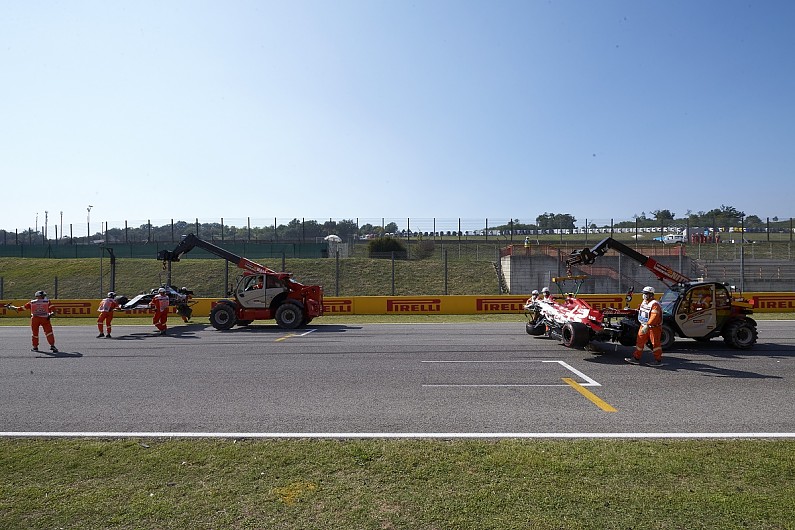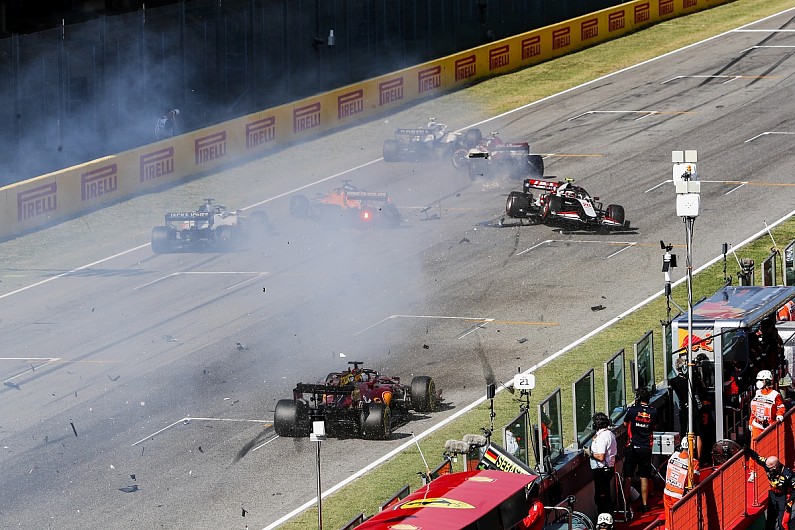
The key questions about the Mugello F1 restart crash
by Adam CooperThe safety car restart crash that triggered the first red flag in Formula 1's Tuscan Grand Prix at Mugello raised key questions after the race, as ADAM COOPER explains
Carlos Sainz Jr, Kevin Magnussen, Antonio Giovinazzi and Nicholas Latifi all had their races ended prematurely in a nasty clash approaching the restart on lap seven, which dominated the post-race talking points.
But what caused the accident, and who was at fault? Here is a look at some of the themes that emerged.
What are the safety car rules?
The rules that relate to the use of the safety car in F1 have been refined and developed for over 25 years.
The section of the 2020 sporting regulations that relates to restarts, and which was cited by the stewards when 12 drivers were given a warning on Sunday, is Article 39.13.
It reads as follows: "When the clerk of the course decides it is safe to call in the safety car the message 'SAFETY CAR IN THIS LAP' will be sent to all teams via the official messaging system and the car's orange lights will be extinguished. This will be the signal to the teams and drivers that it will be entering the pitlane at the end of that lap.
"At this point the first car in line behind the safety car may dictate the pace and, if necessary, fall more than ten car lengths behind it."
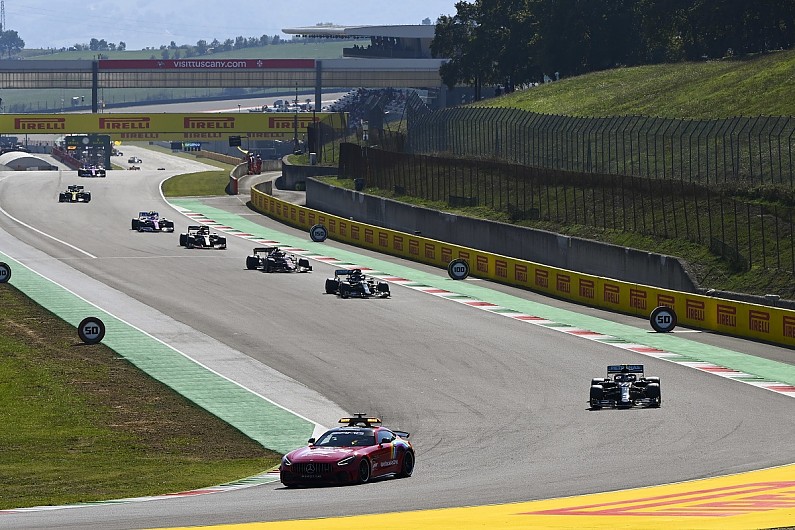
The key paragraph that relates to Sunday's accident reads: "In order to avoid the likelihood of accidents before the safety car returns to the pits, from the point at which the lights on the car are turned out drivers must proceed at a pace which involves no erratic acceleration or braking nor any other manoeuvre which is likely to endanger other drivers or impede the restart.
"As the safety car is approaching the pit entry, the SC boards will be withdrawn and, other than on the last lap of the race, as the leader approaches the line the yellow flags will be withdrawn and a green flag will be displayed at the line."
- My job in F1
- Safety car driver Bernd Maylander
Summing up the process, F1 race director Michael Masi said on Sunday that there are four phases to the restart notification process.
"The first phase is that we advise all teams through the messaging system, which is also what's seen on the graphics, that the safety car is in this lap," he explained.
"That prepares all of the teams to advise their drivers accordingly. From there, the next point is that at a predetermined point at each circuit generally, the safety car boards are withdrawn, however the yellow flags continue to be displayed.
"Then once the safety car is clear of the circuit, the yellow flags are withdrawn and the green flag is displayed at the control line only."
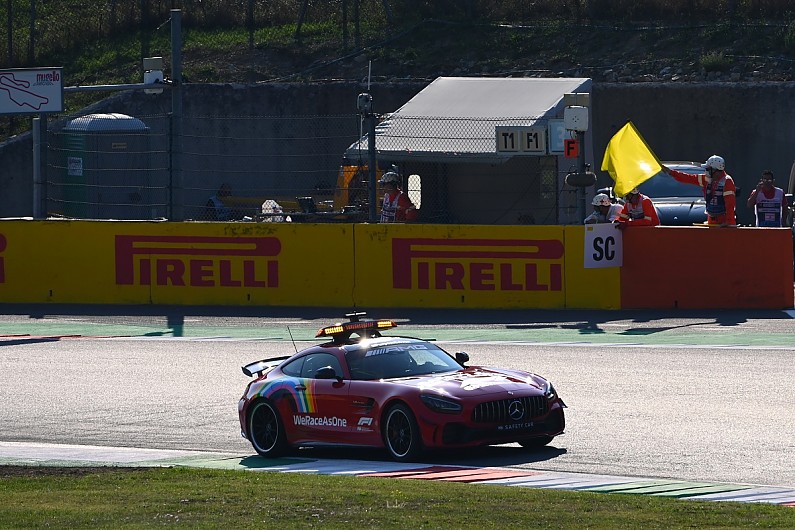
When can drivers overtake again?
A critical requirement is that drivers can't overtake the safety car until it heads into the pit entry, which is officially marked by what is known as "Safety Car Line 1."
Until a few years ago drivers could start racing and passing each other at that safety car line - in other words, typically at the start of the pit entry.
However that was changed to the control line, or the circuit's official timing point. In effect it therefore became a rolling start from the grid, rather than from the final corner as previously, but with no passing allowed until cars have crossed the line.
Masi made it clear after the race that, as is standard practice, the drivers were reminded in Mugello of their responsibilities.
"The drivers were all advised very clearly at the drivers' meeting on Friday night," he said. "There were two key parts to remind them.
"One was to ensure that they don't overtake the safety car before the safety car line at pit entry. The second part was, which is unusual for this circuit, is that the control line where they can overtake is located close to the pitlane exit."
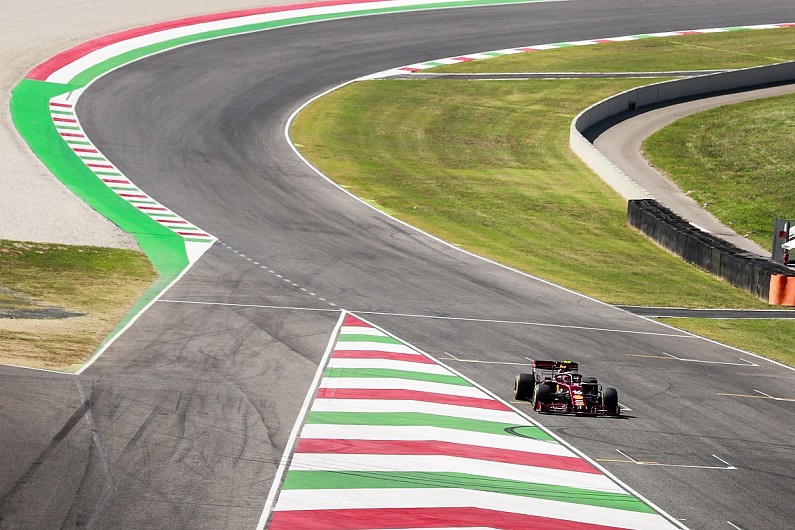
Did the Mugello track design contribute?
Masi acknowledged that the long straight at Mugello and relatively late location of the control line played a role in the circumstances of the accident, in part because as leader Bottas knew that he would be vulnerable to being passed by Hamilton if his team-mate got a good tow.
Taking off as late as possible reduced the possibility of that happening.
"We've seen similar matters in Baku," said Masi. "With such a long run, where the leader who has every right to dictate the pace, has kept it quite slow to try and avoid a slipstream from the cars behind."
He added: "I think there was a combination of factors. There was no doubt that the long straight adds to that.
"But the end of the day you race to the line. All the drivers are well and truly aware that there's no overtaking prior to the control line. And it's not a new regulation."
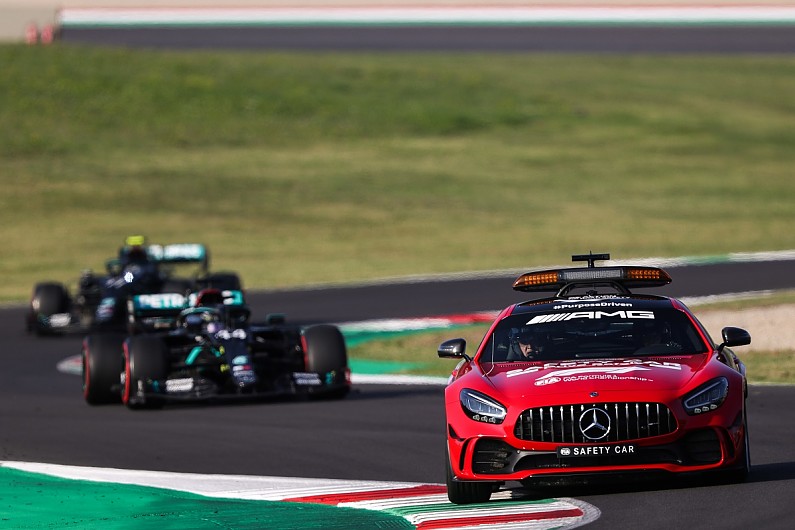
Did the safety car lights go out too late?
One criticism that quickly emerged from the drivers, including race winner Lewis Hamilton, was that the safety car lights went out very late, giving the drivers little warning that the restart was about to happen.
"It's absolutely not Valtteri's fault at all," said Hamilton. "It's the decision makers. They're obviously trying to make it more exciting, but ultimately today you've seen they've put people at risk. So, perhaps they need to rethink that.
"They have been moving switching off the safety car lights later and later and later, and we're out there fighting for a position. Especially when you earn a position like Valtteri earned the position of being in the lead and then obviously they are trying to make it more exciting - but today was a little bit over the limit perhaps. But he did exactly what anyone would do."
However the rules make no specific provision for how early or how late in the lap the lights should go out, and drivers are in essence expected to use their experience and make allowances for any circumstances.
Masi refuted the suggestion from the drivers that the lights went out too late.
"Simply put, they can criticise all they want," said the Australian. "Looking from the distance perspective, from where the lights were extinguished to the control line, [it was] probably not dissimilar, if not longer, than a number of other venues.
"The safety car lights go out where they do, the safety car goes into the pitlane. We have the 20 best drivers in the world. And as we saw earlier today in the F3 race, those drivers in the junior category had a very, very similar restart to what was occurring in the F1 race, and navigated it quite well, without incident."
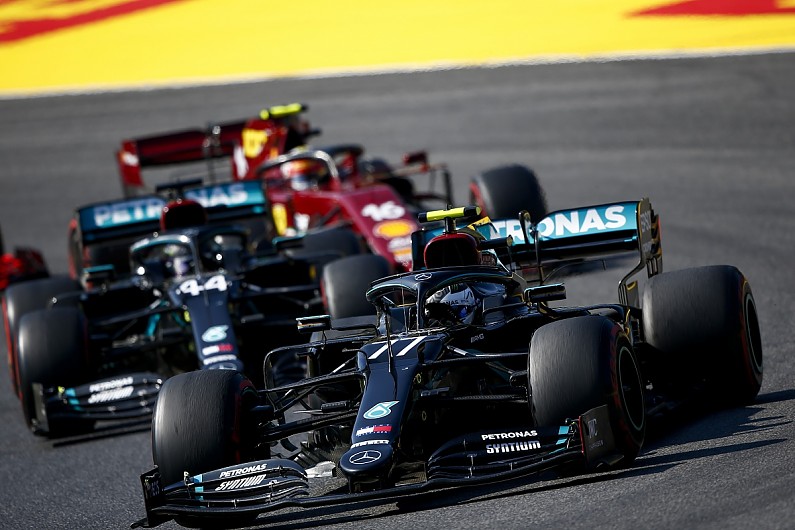
Was Bottas to blame for going so slow?
As is made clear in the regulations, the leader is entitled to set the pace, and decide when he wants to accelerate.
This was formally acknowledged by the FIA stewards on Sunday. In their decision to hand a warning to 12 drivers they noted: "The driver of Car 77 [Bottas] and the other drivers involved in the restart not mentioned above complied with the regulations. Car 77 had the right under the regulations to dictate the pace."
Bottas stressed that he was only doing what any race leader would have done, and like Hamilton, he suggested that the lights had gone out late.
"We're allowed to race from the control line, which has been there for a while, I think," he said. "Just the difference this year has been the safety car, they are putting the lights off quite late, so you can only build the gap pretty late on.
"So, of course when you're in the lead you try to maximise your chances and I'm not at all to blame for that. I was doing consistent speed until I went. Yes, I went late, but we start racing from the control line, not before that.
"The guys behind who crashed because of that, they can look in the mirror. There's no point whining about it. I don't know who's deciding what's happening with the safety cars but they're trying to make the show better by turning the lights later, so we can't build a gap early and then go like the corner before the race start."
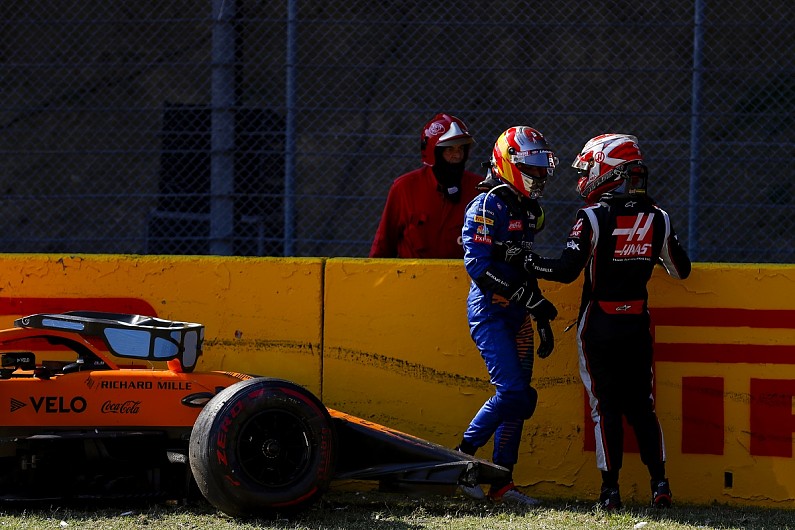
Why did the drivers get a warning?
Only three drivers were formally called to see the stewards after the race: Magnussen, Kvyat and Latifi. However, when their decision emerged a total of 12 were named and all given a warning.
The stewards cited Article 39.13 and concluded, "that the root cause of this incident was the inconsistent application of throttle and brake, from the final corner along the pitstraight, by the above drivers.
"The stewards acknowledge the challenges the location of the control line presents at this circuit and the desire of drivers to take advantage of the restart.
"However this incident demonstrates the need for caution to be exercised in the restart situation and note that there was an extreme concertina effect which dramatically increased as it moved down the field."
They added: "We also note that some drivers might have avoided being involved in the incident had they not followed directly behind the car in front. By doing so they effectively blocked off all visibility of what was happening immediately in front of the preceding car."
The 12 drivers named were given the relatively meaningless penalty of a warning "as it is the view of the stewards that no one driver was wholly or predominantly to blame."
The only drivers to escape sanction were the leading trio of Bottas, Hamilton and Charles Leclerc, and the three who were at the very rear of the field, Romain Grosjean, Kimi Raikkonen and Sebastian Vettel.
From his vantage point Vettel made an interesting observation: "I was obviously I guess last at that point and behind Kimi, so it happened a bit further down the road.
"I didn't see exactly what led to it, but already even for me, it was a bit erratic in terms of speeding up, slowing down, speeding up, and then finally speeding up, and everyone was jumping on the brakes.
"There was a bit of a gap because Kimi was quite far behind the car in front, and probably it was better for the two of us."
